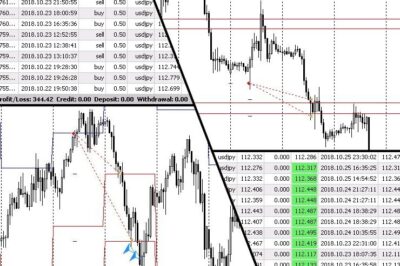Contents
If the market continues to fall, you can feel good that you’ve preserved some of your gains. And if it bounces back, you won’t miss out on the rebound. That lack of objective feedback is one of the big problems, and decision-making biases are one of the culprits.

Trading options involves a number of considerations both before and after the trade has been placed. Many of the mistakes mentioned can be accounted for before the trade is opened by utilizing the tools and resources Fidelity offers. The single most important step to trading options is to develop a plan and stick with it!
Risking More Than You Can Afford to Lose
If the value of your positions drop sharply enough then your stock may be automatically sold by the broker to recover any losses you have accrued. Margin — using borrowed money from your broker to purchase securities, usually futures and options. While margin can help you make more money, it can also exaggerate your losses just as much. Make sure you understand how the margin works and when your broker could require you to sell any positions you hold.
- Its broker-dealer subsidiary, Charles Schwab & Co., Inc. , offers investment services and products, including Schwab brokerage accounts.
- Do your homework no matter how long it takes, looking for nearly-perfect technical patterns or fundamental set-ups.
- If it is poorly managed, in financial trouble, or an outright trading scam, you could lose all your money.
- Talking about absolute numbers in trading is an easy sign that someone is trying to scam you.
- Try using the lowest level of leverage offered by your trading provider.
- At one point, traders will give up trading themselves and start looking for trading robots or EAs to make them rich.
How much are you willing to lose on a trade that doesn’t go according to plan? When a gut feeling is your only reason for entering a trade, that’s one of the trading mistakes too many people make while trading stocks. Nowadays, you can even test your trading strategy and its potential before risking your money. Many successful traders start their financial education long before coming to the Forex market. Nobody will put pressure on you if you do not know trading strategies or patterns. Nevertheless, to show good results, you need to understand what you are doing.
Mistake #1: Strategy doesn’t match your outlook
“The same can be said about long-term investing, particularly in retirement accounts which traditionally have the longest time horizon.” Lum agrees that it’s best for investors to avoid tracking their performance too frequently. ig markets forex While it’s easier than ever to get instant information on your portfolio’s progress, it doesn’t mean it’s necessary. Not understanding and overusing leverage is probably the most costly mistake new traders make.

But some things never change and new traders can be prone to making common trading mistakes. However, savvy options traders can use this to their advantage. The expected volatility of a stock influences the option’s premium, or the price the options trader pays for the contract. Because of this, understanding volatility will help you determine whether an option is cheap.
Some investors tend to believe that they can never excel at investing because stock market success is reserved for sophisticated investors only. With a little time devoted to learning and research, investors can become well-equipped to control their own portfolios and investing decisions, all while being profitable. Remember, much of investing is sticking to common sense and rationality. Traders also go short more often than conservative investors and tend toward averaging up, because the security is advancing rather than declining. This is an equally risky move that is another common mistake made by a novice trader.
Qualitative analysis is a strategy that is one of the easiest and most effective for evaluating a potential investment. This isn’t to say that you should balk at every stock tip. If one really grabs your attention, the first thing to do is consider the source. The next thing is to do your own homework so that you know what you are buying and why. These stock tips often don’t pan out and go straight down after you buy them. Remember, buying on media tips is often founded on nothing more than a speculative gamble.
Mistake #3: Choosing the wrong position size
I constantly get questions from traders of all kinds whether or not it’s the right time to “get in” or “get out” of the market. No one can time the market perfectly and being entirely out of the market will almost certainly result in missed opportunities. That unpleasant feeling can prevent us from learning from a mistake because, let’s face it, who wants to feel bad?

That means taking some profits in outperforming sectors and buying a few shares in underperforming sectors. Since I’m a trader analyst, attendees are usually surprised to hear me say that. But I think it reinforces the idea that traders also need to be investors; they are not mutually exclusive. For emerging traders looking to learn how to short, Elder suggests that traders find a stock that they believe has poor prospects and sell short no more than 100 shares.
However, if a stock is rising, less skilled traders might pull the trigger early, failing to realize they’re leaving some time premium on the table. Always treat a spread as a single trade rather than try to deal with the minutia of timing. You want to get into the trade before the market starts going down.
Know three important mistakes that if you can avoid making them, you will become a stronger and more profitable trader. This article discusses those three mistakes and tells you how to avoid them. The content on this site is for entertainment and educational millionaire next door review purposes only. All advice, including picks and predictions, is based on individual commentators’ opinions and not that of Minute Media or its related brands. No one should expect to make money from the picks and predictions discussed on this website.
Risking too much capital in a single trade
Online brokers’ systems are not quite fast enough to service the true day trader; literally, pennies per share can make the difference between a profitable and losing trade. Most brokerages recommend that investors take day-trading courses before getting started. It is a mistake not to research an investment that interests you. Research helps you understand a financial instrument and know what you are getting into. If you are investing in a stock, for instance, research the company and its business plans. Do not act on the premise that markets are efficient and you can’t make money by identifying good investments.
Giving away assets in one’s lifetime might make sense tax-wise, but the issue is deeply emotional and personal for most people. So learning is a good thing, but despite the success of weather services, learning outside of school actually is difficult. When you were a kid in school, learning was, ostensibly, your job. The lessons followed a progression and built on each other.
This paradox explains why so many participants eventually get burned, wash out, and look for safer hobbies. Next time you’re tempted to buy based on a hot tip, don’t do so until you’ve got all the facts and are comfortable with the company. Ideally, obtain a second opinion from other investors or unbiased financial advisors. Rebalancing is the process of returning your portfolio to its target asset allocation as outlined in your investment plan. Rebalancing is difficult because it may force you to sell the asset class that is performing well and buy more of your worst-performing asset class. This contrarian action is very difficult for many novice investors.
Or, as another option for a more hands-off approach, invest passively in the markets through index funds and watch your portfolio grow over time. By using your brokerage account to buy diversified mutual and index funds, you take on less risk than when you buy an individual company’s stock. If you want your winning trades to be greater than your losing trades, you need to have money and risk management rules hard-baked into your trading plan. The key part of your risk management strategy is to establish how much of your capital you are willing to risk on each trade. Day traders ideally should risk less than 1% of their capital on any single trade. That means that a stop-loss order closes out a trade if it results in no more than a 1% loss of trading capital.
But at the same time, the quantity of misinformation and bad advice that’s available online has also never been greater, so you really have to do be discerning. If anyone really had profitable stock tips, trading advice, or a secret formula to make big bucks, would they blab it on TV or sell it to you for $49 per month? They’d keep their mouth shut, make their millions and not need to sell a newsletter to make a living.
A large stock like IBM is usually not a liquidity problem for stock or options traders. Take SuperGreenTechnologies, an environmentally friendly energy company with some promise, which might only have a stock that trades once a week by appointment only. Determine an upside exit plan and the worst-case forex trading vocabulary scenario you are willing to tolerate on the downside. If you reach your upside goals, clear your position and take your profits. If you reach your downside stop-loss, once again you should clear your position. Don’t expose yourself to further risk in hopes that the options price might come back.